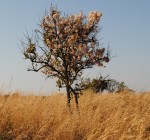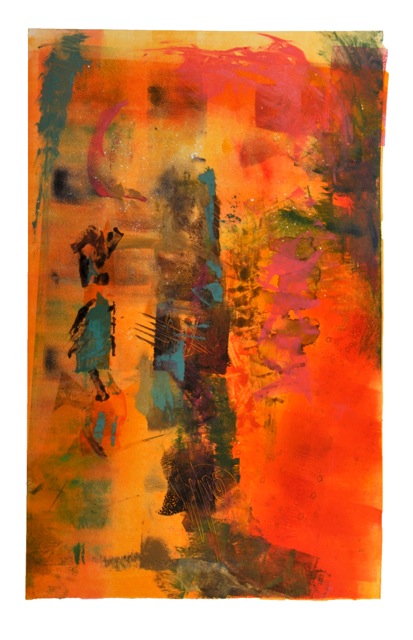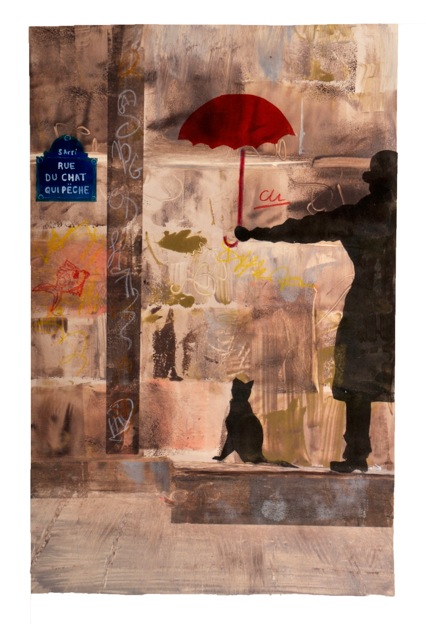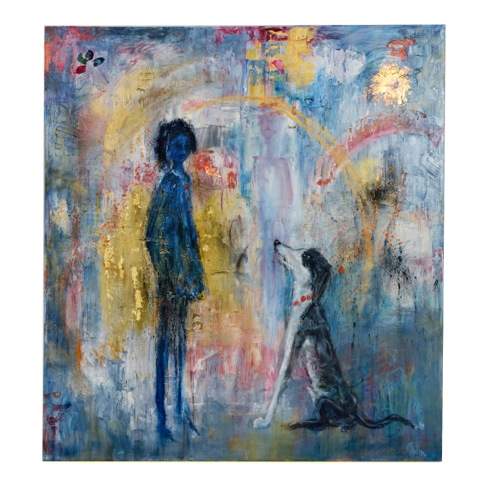 Carol Aslin, one of Zambia’s leading artists, will hold her sixteenth exhibition this September. This exhibition is eagerly awaited by her collectors worldwide and has taken two years to come to fruition. It will feature three different media – oil painting, monoprints and sculpture. Carol has spent the last two years honing new skills and finding new inspiration to drive her work ever forward. She has never been content to tread the same path, no matter how successful she has become.
Carol Aslin, one of Zambia’s leading artists, will hold her sixteenth exhibition this September. This exhibition is eagerly awaited by her collectors worldwide and has taken two years to come to fruition. It will feature three different media – oil painting, monoprints and sculpture. Carol has spent the last two years honing new skills and finding new inspiration to drive her work ever forward. She has never been content to tread the same path, no matter how successful she has become.
Carol’s life has contained a number of circles. Born in Zimbabwe, she grew up in Zambia but later left to study, live and work in New York and the UK. She then returned to Zambia with her British husband in 1998.
Art is another circle that defines her. Her art is a ceaseless exploration of her muse, of the ways in which she can present her ideas through different techniques, (whether painting, monoprint or etching), and of the different methods she can employ within each technique. The interplay of all these elements is the circle of her art.
The oil paintings mark a new direction for this established landscape and wildlife artist. Carol was inspired by the series of etchings she did two years ago, entitled ‘Journeying’ which changed the course of her painting and opened up another world of drawing and imagination. She is now depicting more mystical and abstract subject matter. Carol’s seismic exhibition of etching work in Lusaka in 2010 also featured the work of other notable printmakers, Cynthia Zukas, Lutanda Mwamba, Agnus Yombe and Patrick Mweemba.
Carol has always been drawn to the exploration of death and the afterlife. This new exhibition in September will feature a number of paintings on this subject. Carol is examining her fascination with the idea that we are not alone – that we possess a soul or spirit which accompanies and protects us throughout our lives. ‘Space Travel’, ‘Pin Stripes and Lizards’, ‘A New Day’ are just some of the paintings which portray how the artist visualises this. She has been heavily influenced by the Philip Pullman trilogy ‘His Dark Materials’ and was captivated by his image of our souls as animals. And this goes full circle to her understanding of nature, seen from her days living in the LuangwaValley. It was here that she observed the symbiosis in nature, where each insect, plant and animal is necessary to protect the fragile balance of nature’s ecosystems.
From this thoughtful and spiritual stage, Carol then emerges into a celebration of life with the resulting bold, bright and optimistic paintings of people, usually with women as the core subject with the suggestion of a man, mysteriously half-glimpsed in the background.
A keen dressage rider, Carol’s love of horses comes through in several works that depict our different relationships and experiences with horses – riders on horses, Edwardian side-saddle riders and an arresting carousel horse – the largest piece in the exhibition.
All her paintings are highly textured pieces, with paint applied in layers, using brushes, palette knives, card and hands, together with a variety of mixed media such as gold leaf, marble dust, pastels and sand, which are scratched or rubbed onto the canvas. She is constantly experimenting to find out how her message will change depending on whether she has used fingers, brush or knife blade.
Her time at the Artichoke Studio in London (one of the leading professional fine art print workshops) led Carol to explore the monoprint medium.
A monoprint is a single impression of an image made from a reprintable block, such as a metal plate used for an etching. But instead of printing an edition of multiple copies of a single image, only one impression can be produced.
Monoprints may also involve elements that change, where the artist reworks the image in between impressions or after printing, perhaps using collage, or hand-painted additions, so that no two prints can be identical. It is because of this that the monoprint process is so expressive and unique.
Monoprints are known as the most painterly method among the various printmaking techniques; a monoprint is essentially a printed painting. Carol was inspired to develop this medium because of its spontaneity and its rare combination of printmaking, painting and drawing media.
The pieces Carol will exhibit are an intriguing blend of abstract and realistic images, such as ‘Rue du Chat Qui Peche’, which was inspired by an image seen during a recent trip to Paris.
Sculptural artworks will, for the first time, be part of Carol’s exhibition. Linking back to her belief that we have guardian spirits protecting us, this introductory, ‘taster’ selection of sculptures depict angels, but not perfect, beautiful, textbook specimens. These angels have old, worn bodies, weary of life perhaps, but wise and reflective spirits nonetheless. The bodies are worked from clay, with wings of copper, seed pods, wire and aluminium.
Carol has now reached a time of great artistic satisfaction. All the elements of her art are coming together. She says “The best thing that has happened to me is that my early dreams, unexpectedly, are slowly becoming a reality.” Influenced by a range of artists, from Picasso to Freud, from Matisse to Turner, Carol has always been inspired by our planet and its beauty, together with the animals that inhabit it. But inspiration is just one of her ingredients. The process of making her art is something that she has always explored. The use of colour, how colours play off each other and vibrate. How to interpret her subject and portray it in new ways. How to imbue her work with the soul of the subject, be it human or animal.
For those lucky enough to view this exhibition, they will see that Carol’s artistic journey has come full circle. For now, that is – until her next artistic circle begins to orbit.
The exhibition will be opening on Thursday 13 September and closing on 20 September at the Alliance Francaise de Lusaka. If you would like to attend the opening night please call Carol on 0977 879-144 for an invitation.
By Sarah Harrison



Leave a Reply
You must be logged in to post a comment.